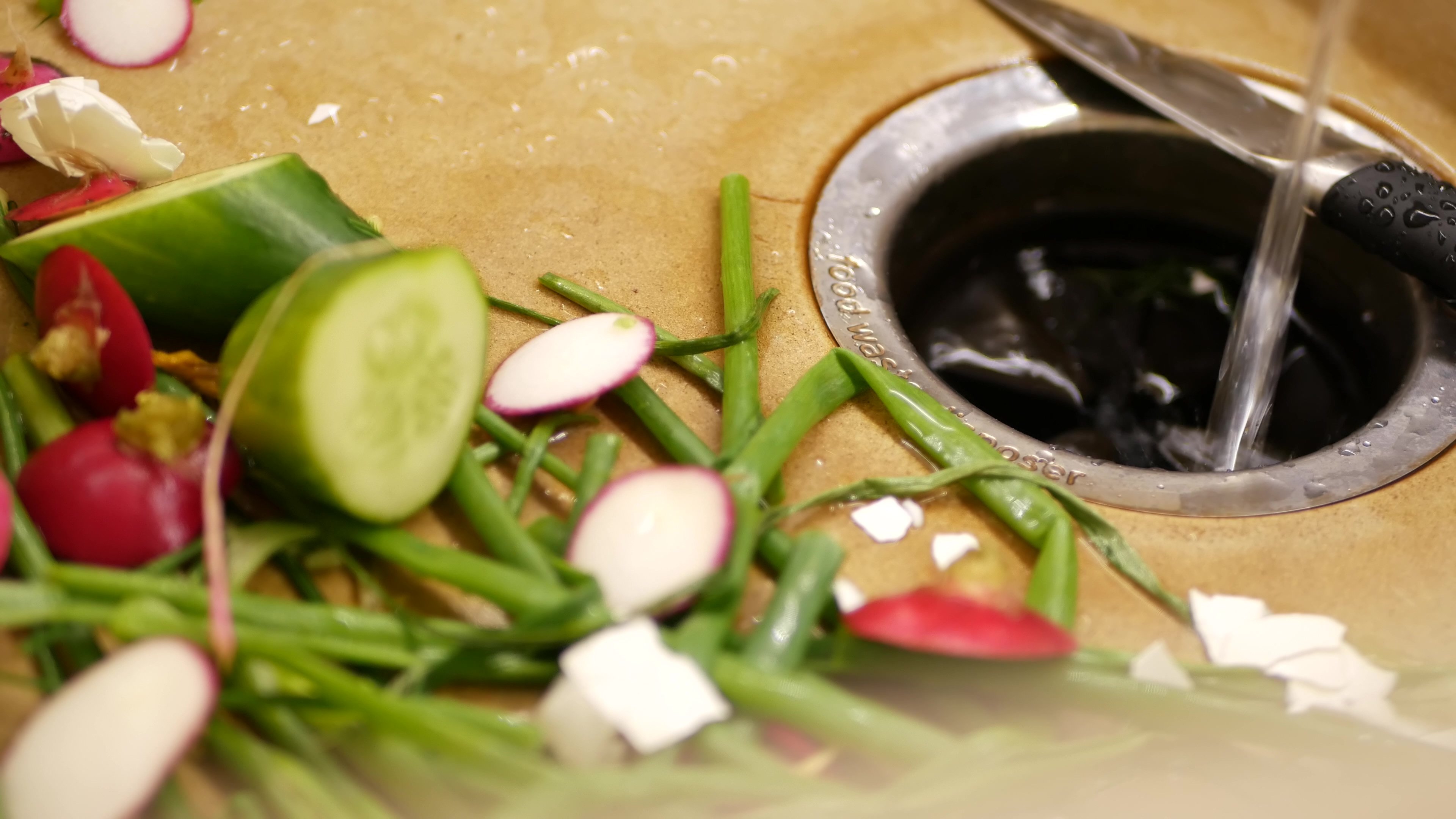
A sink grinder, also known as a waste disposer, is often associated with American kitchens and scenes from TV shows where, during washing up, food scraps are disposed of directly from the plate into the sink drain. However, this does not result in a clogged sink. Why? Because a kitchen waste disposer is installed in it, which efficiently handles all kitchen scraps. Highly ground scraps enter the sewage system along with water.
Sink grinder – what is it and how does it work?
The grinder intended for grinding kitchen waste is a relatively new invention in Ireland, but more and more people are deciding to install this device in their kitchens. Many countries not only allow but even require the use of disposers because this practically eliminates the bio fraction. In this way, significantly less waste is generated.
The construction of the grinder is very simple, it is made of stainless steel, consisting of a tube with two cutting plates mounted inside. The device is connected to electricity, and upon activation, the rotating plates chop the waste thrown into it into very small pieces. The ground waste flows into the sewage system with water. There is no need to worry about clogging the drain, as the ground remains are really very small, much smaller than those that occasionally pass through the grid holes of a standard drain.
What can be thrown into a sink grinder?
Sink grinder owners recommend it mainly because you can practically throw all organic waste into it. Starting from coffee or tea grounds, through vegetable and fruit peels, eggshells, seeds, leaves, plant fragments, wilted flowers, to small bones. Just throw them into the disposer opening and turn on the grinder. Then, simply run a stream of cold water, and the ground remnants leave through the sink drain, entering the sewer pipe directly. The water simultaneously cools the disposer mechanism.
To prevent damage to the device, it is mainly soft organic waste that should be thrown into it. Therefore, one should not dispose of nut shells or large bones this way. Moreover, hot grease cannot be poured into the disposer; it's not just about the grinder itself but more because grease mixed with water can harden, creating a plug with ground waste that effectively clogs the sewer pipe.
Installation of the sink grinder
The installation of a sink grinder is relatively simple, and most people manage it without needing professional help. The most important thing is to have a drain opening of the right width, typically 90 mm. So if you plan to install a kitchen waste grinder, you need to remember this when buying a sink. Before starting the installation, you should also familiarize yourself with dimensions such as the height of the disposer, the distance from the bottom of the sink basin to the centerline of the inlet hole, or the width of the disposer.
The sewage inlet should be about 5 cm below the grinder's opening. The device is placed in the sink opening, gaskets are then fitted, the disposer is mounted, and a flange is placed sealing the gap between the grinder and the edges of the sink opening.

Discover types of sink grinders
All waste grinders available on the market are electric devices, differing in features such as power, installation dimensions, disposer chamber size, and noise level. As for activation methods, they include:
-
cork disposer,
-
pneumatic grinder,
-
wireless grinder.
The first one activates automatically when the sink is plugged with a cork, the second is activated with compressed air, and the last operates using a remote control. The chamber size is particularly significant if a lot of cooking is done in the home, resulting in a large amount of waste that will be disposed of using the grinder.
Waste disposer – benefits
We won't try to convince you that a sink grinder is an absolutely essential device and completely free of disadvantages, but it's worth considering purchasing a disposer. It significantly reduces the amount of waste produced, which can translate into lower waste disposal fees. So it's not only an ecological solution but also an economical one.
Besides, a waste disposer helps maintain sink cleanliness, eliminates the need to clean the drain grid or remove stuck leftovers. The pipe carrying waste to the sewage remains clean, and as a result, no unpleasant smells occur in it. This is another argument in favor of installing a waste disposer. The main downside of such a device is having the proper sink.


















